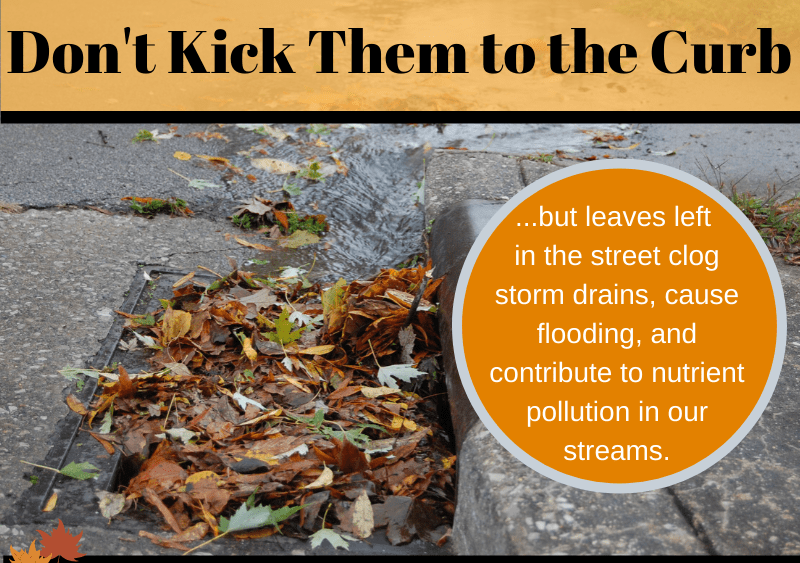Kelly Jackson
Christian County Extension Office
Composting Puts Fall Leaves to Good Use
Composting is an environmentally beneficial process to dispose of leaves and other yard wastes. When you compost leaves, yard debris, and kitchen waste, a microbial process converts these items into a more usable organic amendment. You can use finished compost to improve soil structure in gardens and landscape beds. Compost helps the soil hold nutrients, moderates soil temperatures, and conserves soil moisture. It can also reduce erosion, water runoff and weed problems.
Composting yard and kitchen wastes is environmentally beneficial because it reduces the volume of material going into landfills. Yard and kitchen wastes, like vegetable food scraps and grass clippings, comprise more than 20 percent of waste generated each year. By composting, you help reduce disposal costs and extend the usefulness of landfills.
If you maintain your lawn at about 3” tall for fescue and mow every 5 to 7 days it is unnecessary to remove grass clippings. They can be allowed to fall back on the soil and breakdown naturally. However, if your grass has missed a mowing and grown excessively tall, clippings can be collected and mixed with other materials like leaves or brush for compost.
Weeds free of seed heads and residues like vines and pruned limbs also make good additions to a compost pile. Many kitchen scraps such as fruit and vegetable peelings and cores, coffee grounds, tea bags and crushed eggshells can be composted. However, avoid cooked foods, meat, bones, fat or dairy products because they attract animals.
Site your compost pile on well-drained soil that will benefit from leaching nutrients. If you are just starting to compost, prepare the pile using layers of materials. It is best to alternate layers between green leafy material and brush or other woody material. Unless your plant material contains roots holding to soil, apply a little soil or commercially available compost starter to each layer to inoculate the pile with microorganisms. Ideally, the pile should be one cubic yard (three by three by three feet). This arrangement of materials with soil will aid decomposition and the rate at which the compost will finish.
If you are only going to compost tree leaves, layering isn’t necessary; simply add leaves as you collect them. When leaves are dry, add moisture. Since dead leaves do not have adequate nitrogen for rapid decomposition, mix them with grass clippings or add high-nitrogen fertilizer to speed up decomposition. Five ounces (one-half cup) of fertilizer containing 10 percent nitrogen for each 20 gallons of compressed leaves is adequate. To ensure good aeration and drainage, occasionally put down a three-inch layer of coarse plant material like small twigs or chopped corn stalks.
Your compost needs to be managed properly to decompose quickly. Periodically turn the compost pile, either monthly or when the center of the pile is noticeably hot. This will help microbes more efficiently break down wastes. The more often you aerate, the quicker you will have useable compost. Compost is useable when it fails to heat up after turning.
Adequate moisture is also essential for microbial activity. Water the pile so it is damp but does not remain soggy. Your compost pile should have the moisture content of a well-squeezed sponge, so you can squeeze a few drops of water from a handful of material. It is especially important to supply water during dry periods and when you add leaves and other dry materials to the compost pile. If the pile emits an ammonia smell, it is too wet or packed too tightly for oxygen circulation. Turn the pile and add some coarse material such as small twigs to increase air space.
Compost needs a balanced diet of carbon and nitrogen to break down effectively. Microbes that break down waste need a certain amount of nitrogen for metabolism and growth. Although tree leaves are relatively high in nitrogen, adding nitrogen fertilizer or high-nitrogen components will improve decomposition. Grass clippings generally are high in nitrogen and will enhance decomposition when mixed properly with leaves. Other organic sources of nitrogen are poultry litter, manure and blood meal.
The composting process can be completed in one to two months if materials are shredded, turned to provide good aeration, kept moist, and supplied with nitrogen and other materials that cater to compost-promoting microorganisms. Otherwise, it may take as long as a year for a finished product.
Educational programs of Kentucky Cooperative Extension serve all people regardless of race, color, age, sex, religion, disability, or national origin.
UNIVERSITY OF KENTUCKY, KENTUCKY STATE UNIVERSITY, U.S. DEPARTMENT OF AGRICULTURE, AND KENTUCKY COUNTIES, COOPERATING



